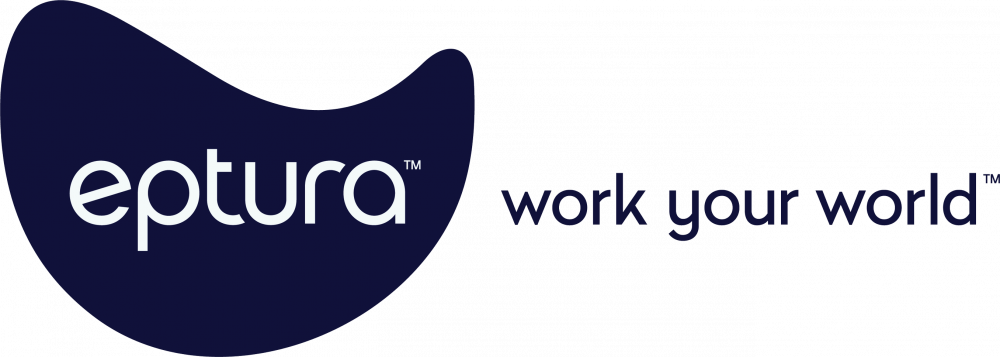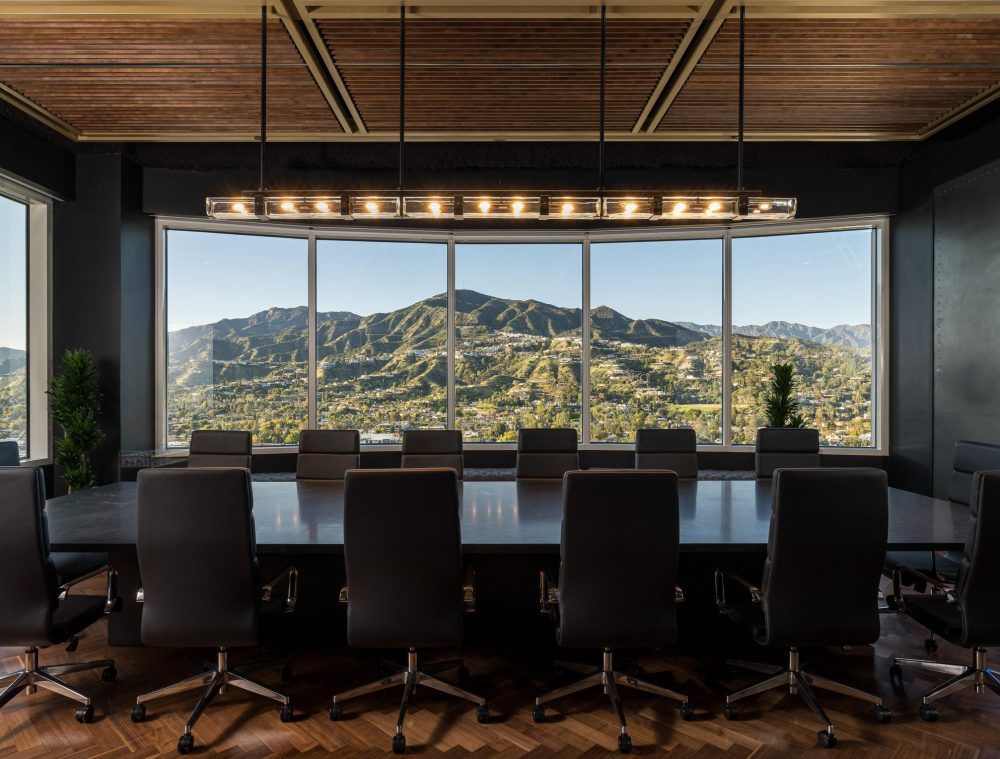Meet 2024 Next Work Environment Competition winner of the office design category: Los Angeles Tech Office HQ by MAWD.
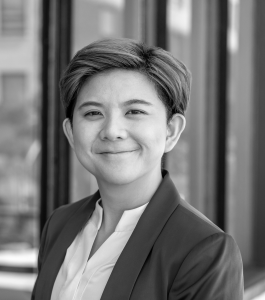
Alyssa Komala
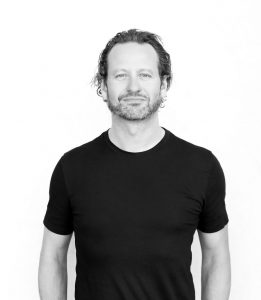
Elliot March
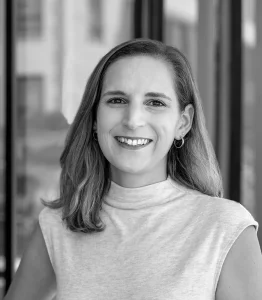
Liz Gallagher
The MAWD team, Alyssa Komala, Elliot March and Liz Gallagher strategically designed the space to support overall employee experience by balancing collaborative spaces with spaces that maximize focus.
Check out the submission below:
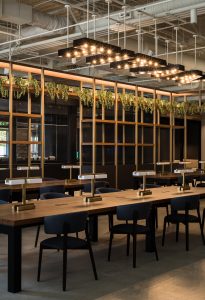
The office space was strategically designed to support overall employee experience by balancing collaborative spaces with spaces that maximize individual (and group) focus. MAWD’s design placed emphasis on diverse meeting spaces — ranging from small tech enabled video conferencing rooms to formal board rooms, casual spaces for collaboration, and everything in between.
MAWD worked to created an interior look and feel that was warm, welcoming, and hospitality driven. MAWD used warm wood, bronze, and brass metals. Moving away from the traditional notion of what a tech office ‘should’ look and feel like, MAWD’s work fused an interior program with exciting amenities, creating a hospitality buzz.
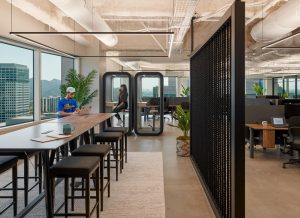
Designed for the post-pandemic tech worker, what sets these collaborative spaces apart is the level of diversity built into these rooms. There are smaller tech enabled huddle rooms for groups of two or three to hop on a quick video conferencing call. There are formal board rooms. For casual meetings, flexible spaces with comfy sofas, which provides the perfect backdrop for ideation and team-building activities.
MAWD worked to design a campus where connectivity among employees was prioritized. The design studio introduced a new connective staircase between the primary working floors, wrapping it in wood and glass to add transparency and visibility. Lighting fixtures that resemble “globes of light” float down the staircase, visible to several floors.
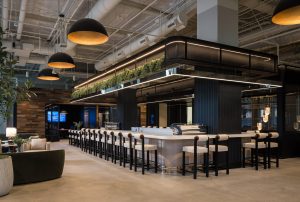
While collaboration and connectivity are key, MAWD worked to ensure employees have ample access to privacy, prioritizing spaces for concentration and deep work. Framery phone and work booths and specialty floors have been carved out for teams that require greater focus, such as dedicated engineering floors, which have been designed with increased privacy and flexibility. Collaborative spaces were thoughtfully designed with walls that can be added and removed to facilitate meetings that quickly expand from smaller to larger groups.
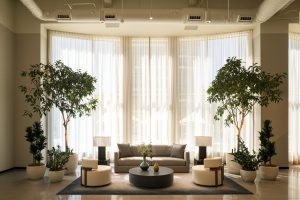
MAWD designed two unique user pathways: one for internal employees, and a second dedicated to clients. Creating these two spatial journeys allowed the design studio to maximize space, while fully customizing the experience. Employees are guided through the Lobby towards working and amenity floors, while clients are guided towards demonstration studios, where they can be trained in the company’s software.
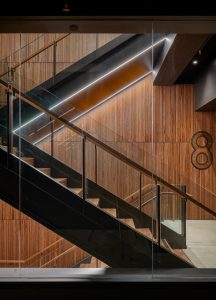
MAWD worked with the existing building to maximize the use of reclaimed materials. The studio tore up old carpet to uncover original concrete flooring, which was polished and left exposed. This, coupled with exposed ceilings provides a tech-friendly, industrial backdrop. Working with local craftsmen, MAWD forged a collaborative relationship with Orion studio, who built the project’s decorative lighting fixtures. For millwork, MAWD worked with Artcrafters, who outfitted the project in a beautiful walnut, appearing in the project’s primary stairwell.
Environmental considerations include LEED fixtures and smart lighting, which employs sensors that maximize natural light, while minimizing the use of interior lighting on bright and sunny days. The level of sophistication and comfort was a priority. Oversized “comfy” couches were selected alongside a diverse array of seating options for employees to find their favorite working spot within the office’s lounge spaces.
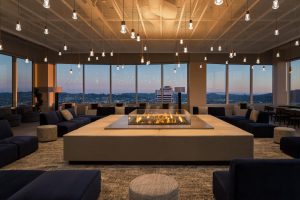
We connected with MAWD to see how the office has been doing since entering the competition:
In the few short months since the project has launched, our team is thrilled with how the space has been brought to life. At present, it’s use has been in line with our client’s wishes and expectations. For now, we are thrilled with the hospitality-driven design, use of reclaimed materials, focus on spaces where employees can connect and indoor-outdoor living.
Special thanks to our 2024 Innovative Brand Partners:
